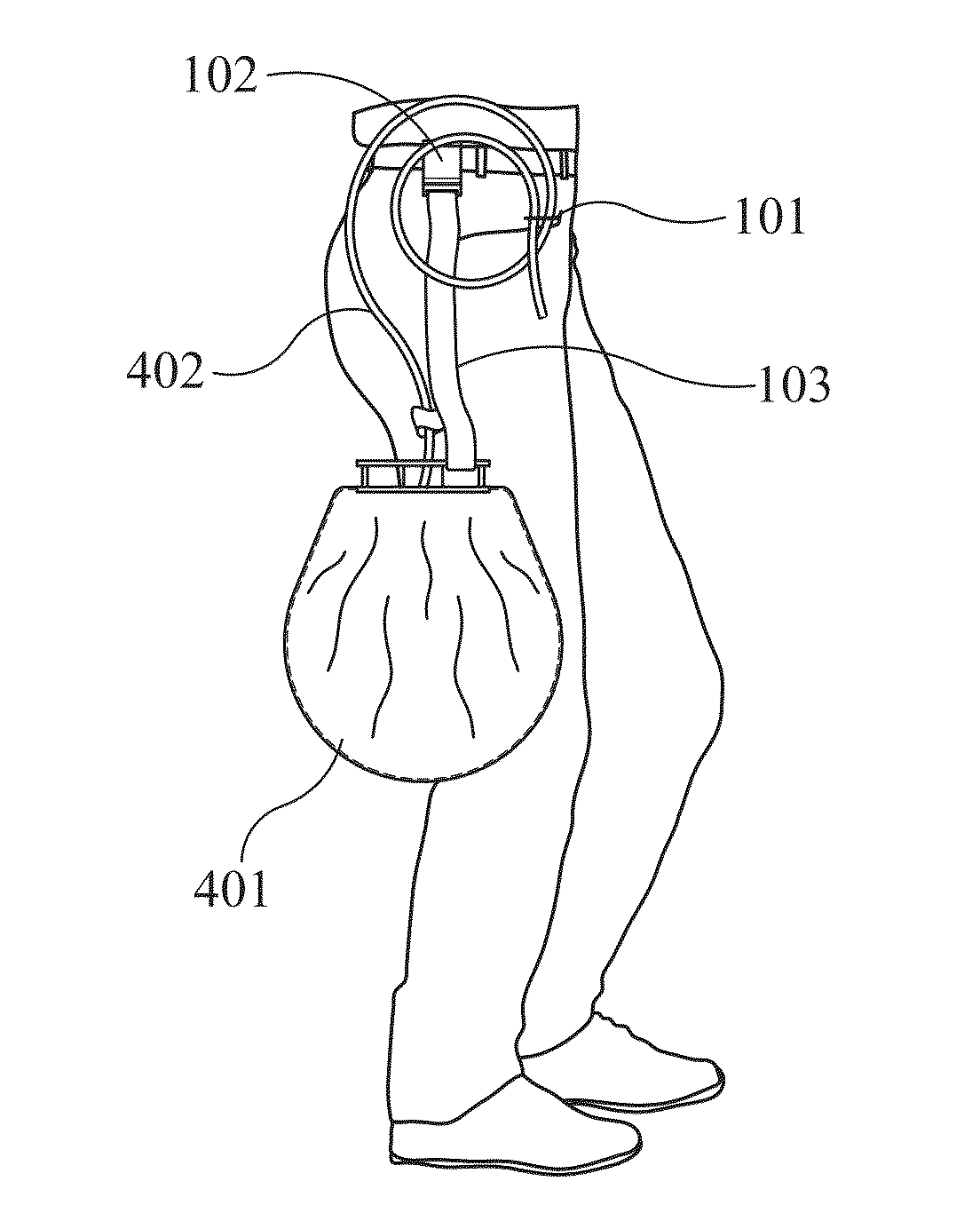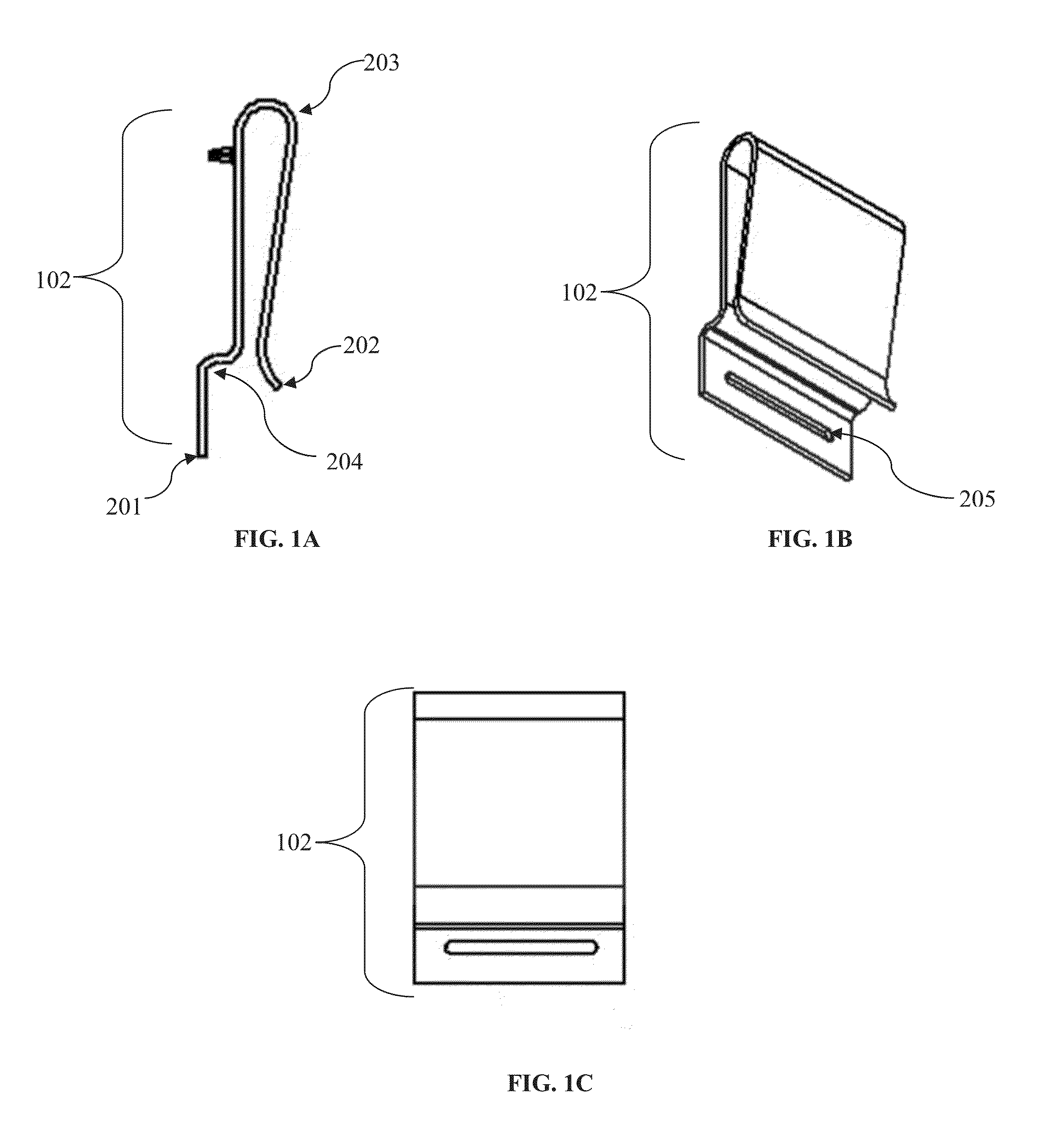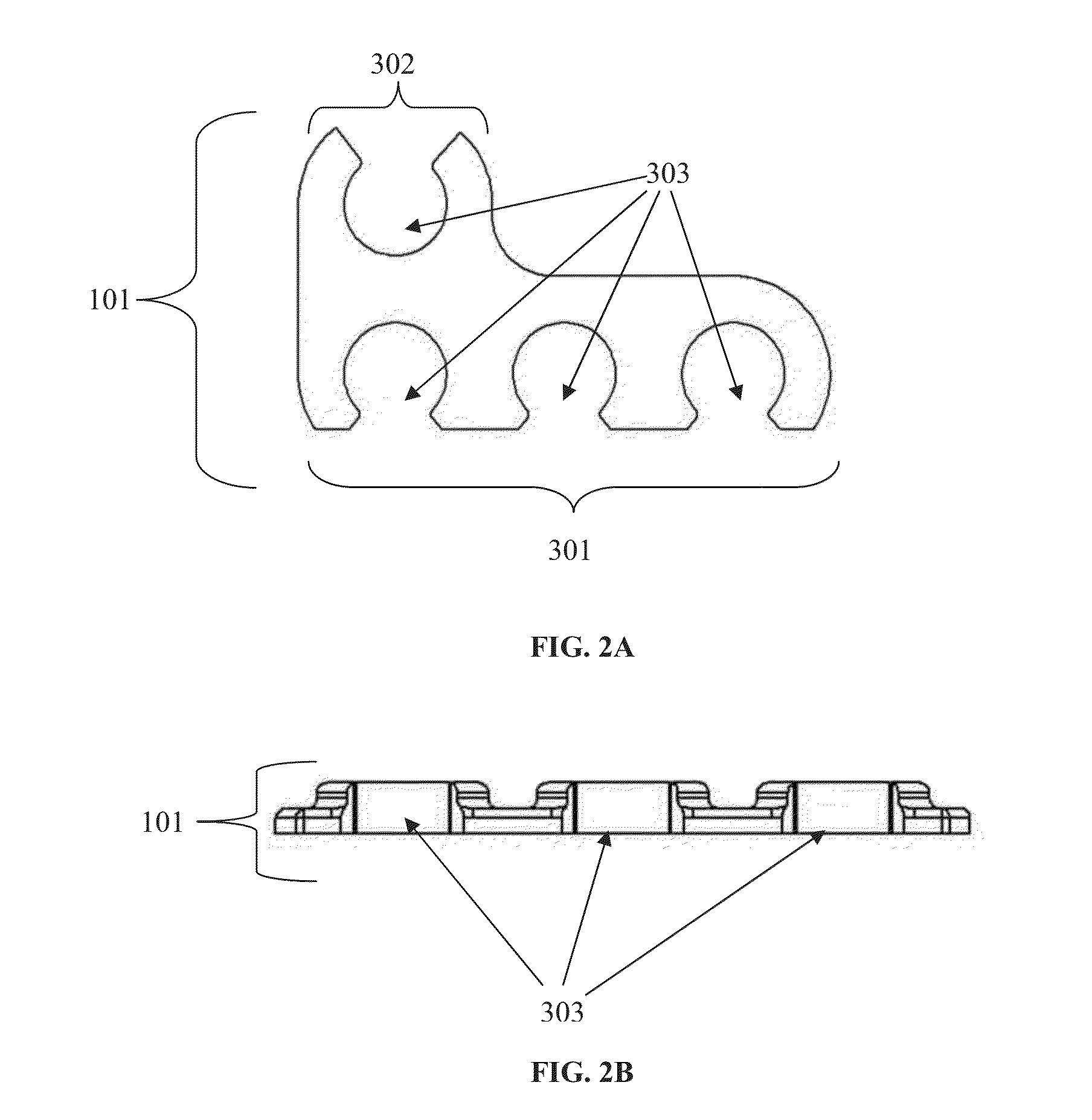Catheter support systems and methods of use
a catheter and support system technology, applied in the field of medical devices, can solve the problems of increasing patient discomfort, unnecessary costs, and high risk of receiving a urinary tract infection in the patient's catheter, so as to prevent backflow, reduce the risk of a urinary tract infection, and maintain dignity
- Summary
- Abstract
- Description
- Claims
- Application Information
AI Technical Summary
Benefits of technology
Problems solved by technology
Method used
Image
Examples
example 1
[0033]A 100 kit for the management of a 401 catheter bag and 402 tubing is provided to assist in the transportation of a patient, with the kit as illustrated in FIG. 3A and FIG. 3B. The kit includes a 101 tubing retainer, a 102 strap clip, and a 103 strap. The 101 tubing retainer has three 303 holes forming a c-shape on the 301 tubing management section and one 303 hole forming a c-shape on the 302 retainer storing section. The 101 tubing retainer is provided and illustrated in FIGS. 2A-2B. The 102 strap clip has a 204 slight bend of approximately 90 degrees, and a 203 major bend of approximately 180 degrees. The 103 strap provided is a Tyvek strap of approximately 16 inches in length, having 304 adhesive at each end for securing the strap or forming loops for holding a catheter bag, as necessary. The 100 kit further includes printed instruction for attaching the 103 strap to the 102 strap clip, the 103 strap to the 401 catheter bag, and the 101 tubing retainer to the 402 catheter t...
example 2
[0034]The 100 kit from Example 1 is provided for the management of a catheter system attached to a patient. The catheter system includes a 401 catheter bag and 402 tubing. A nurse removes the contents of the 100 kit and proceeds to follow the written instructions. The nurse decides first where to attach the strap for the transport of the patient, which in this case the nurse intends to attach the strap to the waist of the nurse for tandem transit with the patient (see FIG. 5B). Next, the nurse connects the first end of the 103 strap to the 102 strap clip by sliding the 103 strap through the 205 strap eyelet, then exposing the 304 adhesive on the first end to form a loop and securing the 102 strap clip into the loop formed by the 103 strap. Next the nurse forms a loop at the second end of the 103 strap by exposing the 304 adhesive at the second end of the 103 strap and forming a loop for holding the hook of the 401 catheter bag. The nurse adjusts the strap length before securing the ...
PUM
 Login to View More
Login to View More Abstract
Description
Claims
Application Information
 Login to View More
Login to View More - R&D
- Intellectual Property
- Life Sciences
- Materials
- Tech Scout
- Unparalleled Data Quality
- Higher Quality Content
- 60% Fewer Hallucinations
Browse by: Latest US Patents, China's latest patents, Technical Efficacy Thesaurus, Application Domain, Technology Topic, Popular Technical Reports.
© 2025 PatSnap. All rights reserved.Legal|Privacy policy|Modern Slavery Act Transparency Statement|Sitemap|About US| Contact US: help@patsnap.com



